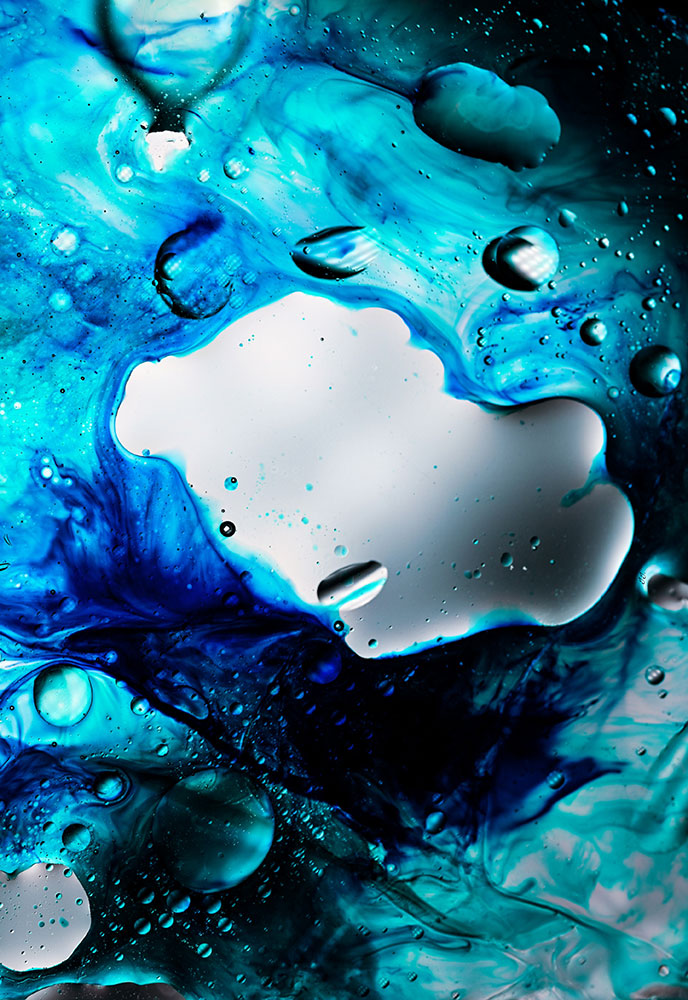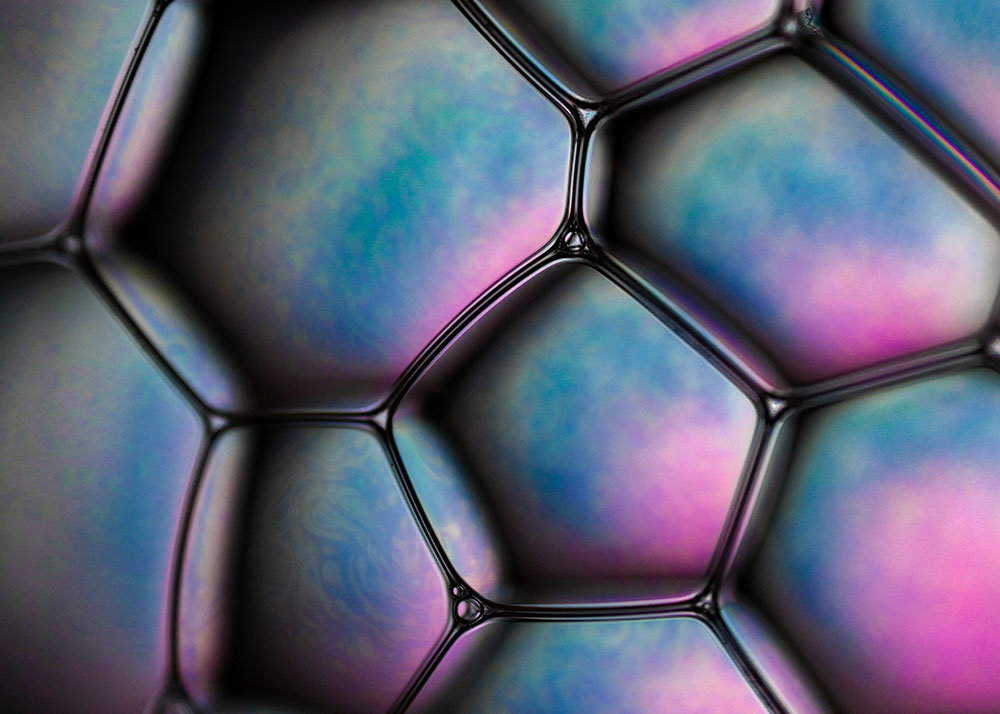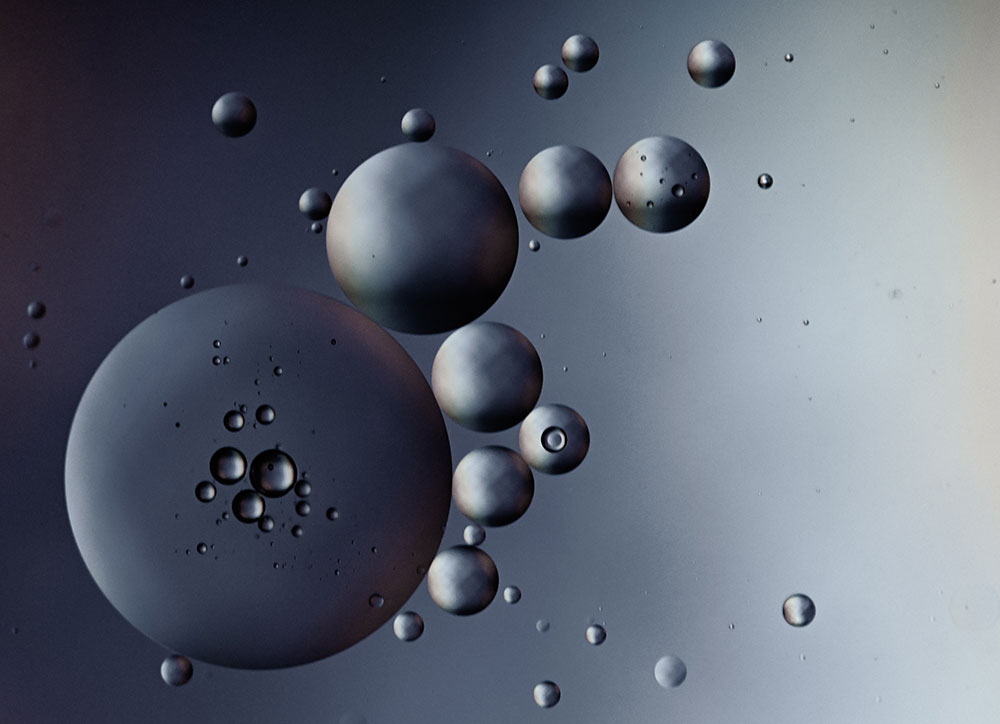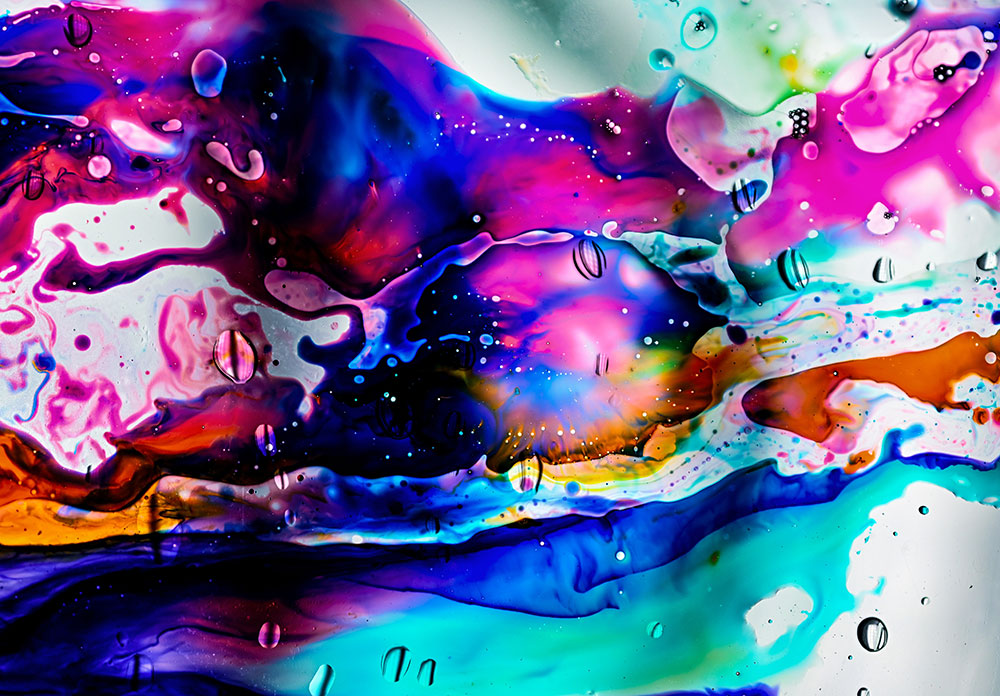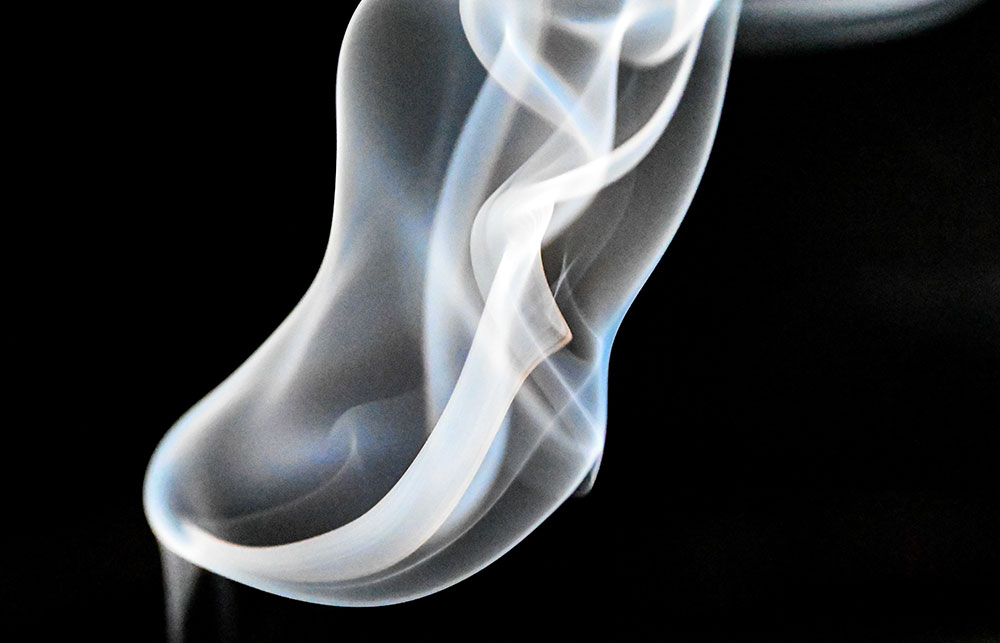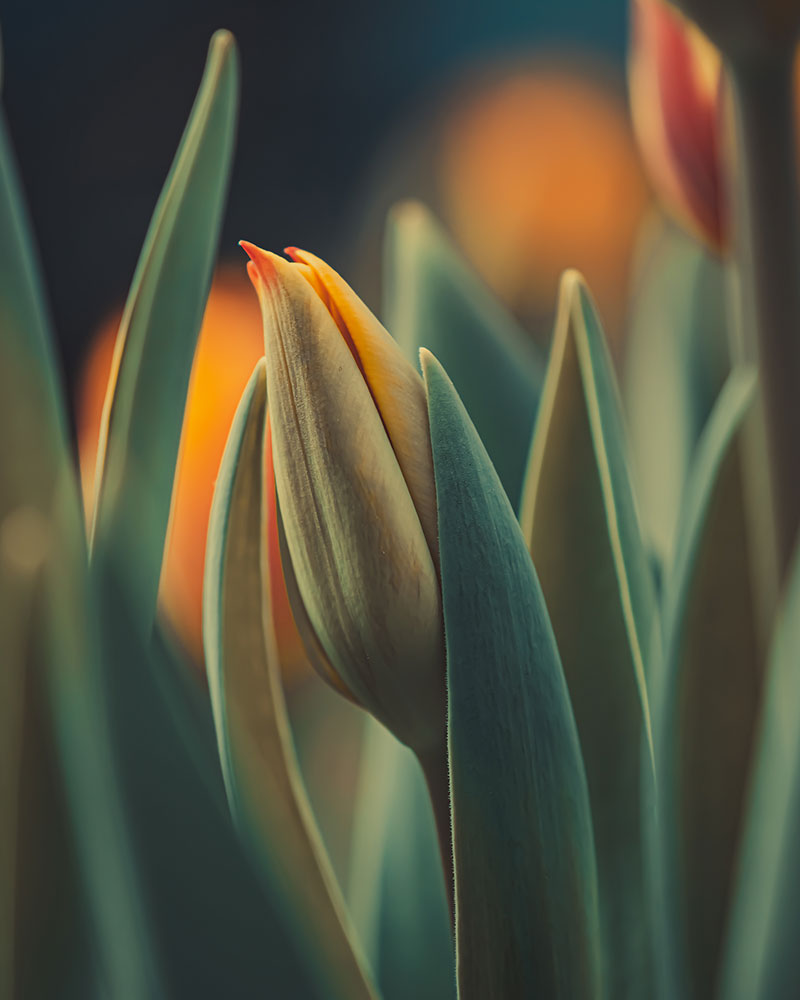
Having a day job as a Postal Worker in Canada, Jeffrey Ofori works outside, which is great because he’s a flower photographer, though it can be distracting to come upon lovely gardens as he’s delivering mail. But to say Jeffrey is just a flower photographer might not be accurate either, because he loves all genres of photography.
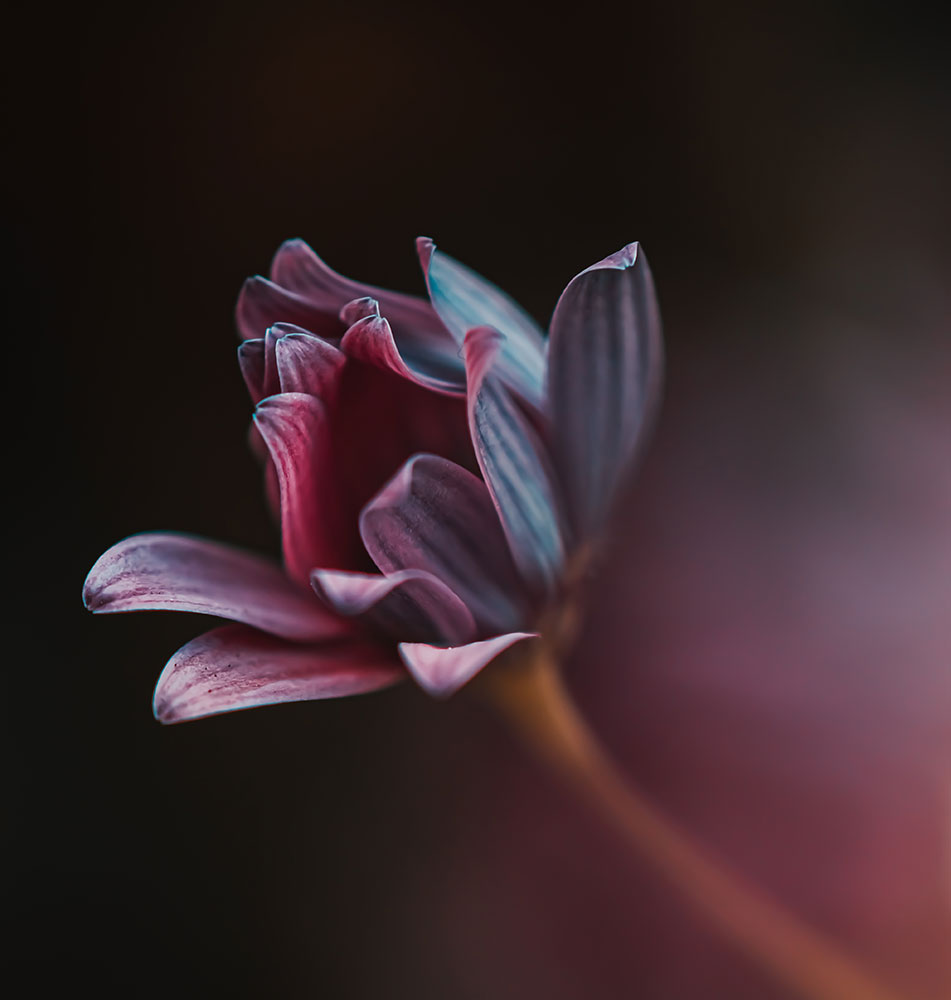
Inspiration from Cinematography
My inspiration comes from—believe it or not—cinematography and color grading, [like] when you’re watching a movie or documentary and there are certain scenes that really draw you in and portray a mood or feeling. I combine that experience with all-inspiring mother nature, and when you bring it down to the macro level, a whole other world opens up.
This cinematic moodiness is brought out by altering the hues or colors of the image palette in his images. And it’s created a unique and visible style when you’re scrolling through your Instagram feed and come upon Jeffrey’s images. You instantly know who created them.
I aim for the cinematic moody feel for my flowers when editing. I always go for that vibe. It’s hard for me to take just a picture of a flower and leave it as is, there are a few instances when I barely edit the photo leaving the flower and its natural color and beauty. For the most part I like to have the flower or petals be the main focal point rather than the background and I want the flowers to tell a story.
Jeffrey normally knows in his head how the final image will look before he’s even brought the image into Adobe Lightroom. He says: “When I capture an image, a lot of the time I already know how it will look in post.” He adds: “I tend to have a calming feeling when I look at my final images. I like to give them names, which are sometimes quirky, sometimes serious. Most of the images that stand out to me though, are the ones that I name.”
I’m a huge fan of cinematography, color grading and color theory.
I’ve created my own custom presets that I work with to get the feel I’m looking to achieve. A lot of the time I shoot underexposed with the white balance set to Cloudy, I also always use a polarizer filter to block out the harsh midday sunlight, and I tend to stick to the Golden hours.
Another aspect to his style is that to the viewer, these flowers almost resemble dancers in a way—their petals are dainty, and in the perfect position relative to the rest of the flower. We’d even call Jeffrey’s images “ethereal” which is exactly what he wants his viewer to think. Jeffrey is adept at using texture, depth-of-field, and composition along with his own color style to create macro images of flowers that look as if they’re paintings not photographs.
“I want the [viewer] to bring their own story to what they see and feel when they come across my art. It brings me joy when I hear or read the emotional feedback from people, it’s a humbling experience,” he explains.
The “Blue Ribbon” image (below), which is my most popular and favorite flower it is an African Daisy just starting to bloom and it’s only an inch tall and the petals flow like poured water. With the right Nikon Micro lens these are the kind of results you can get.
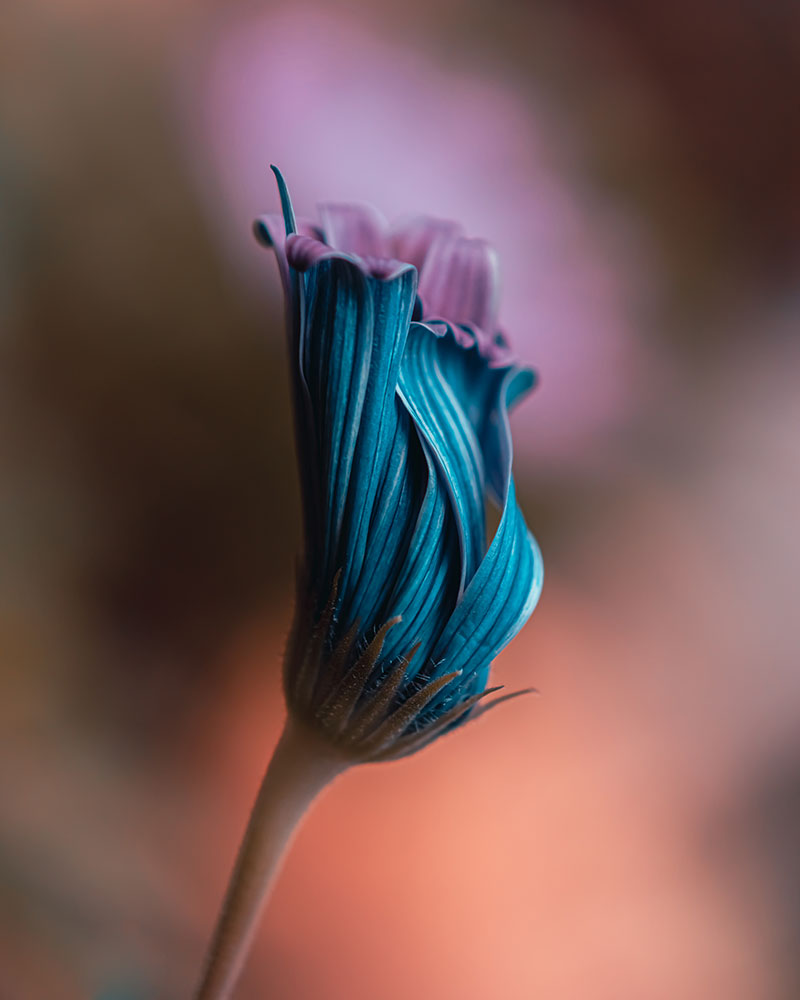
No Flowers Were Harmed in the Making of These Images
I don’t manipulate the flowers themselves by adding or subtracting petals but rather I adjust the textures and tones. Like capturing people, every flower is different.
Jeffrey finds many of his subjects in neighborhood gardens and greenhouses. And because he always takes his camera with him, when the inspiration strikes, he’s ready.
I would say 99% of my flower photography is outdoors. I work with what I’m given. I capture flowers as they are in nature. The most I would do is move a leaf out of the way but I don’t cut or reposition the flowers in any way.” The other 1% of the time I capture indoors with store bought flowers but it is very rare, don’t get me wrong, indoor still life flowers are just as beautiful. I just like to shoot flowers in their natural elements and surroundings.
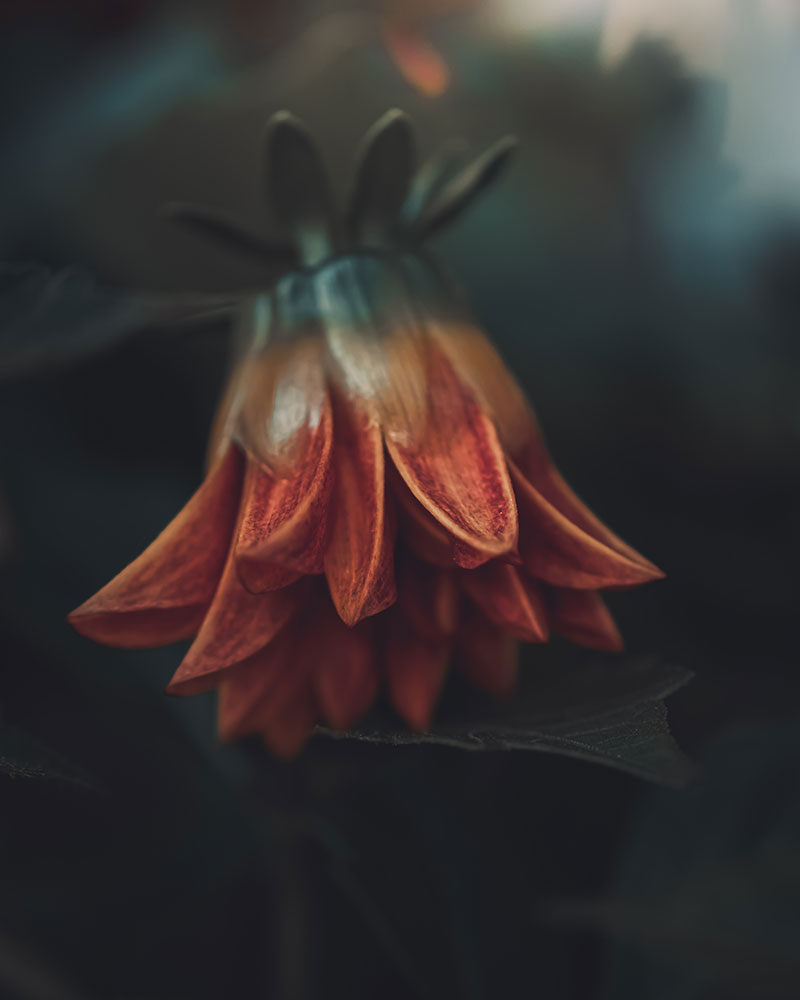
Embracing Nature
A shallow depth of field is probably most important to Jeffrey, he explains, especially close-up. It allows him to manually pinpoint his focus on a certain part of the flower rather than the flower being photographed completely in focus—to turn an image of a flower into a beautiful landscape that fills the frame.
As for color, I change it to how I see it. I’ll use different hues and shades to make you look twice. Most people know what the natural color of the flower looks like, what I aim to do as an artist is make you feel how a flower looks.
I consider myself an artist and the camera is my brush. When I use the quote “a rose is a rose is a rose” what I’m trying to interpret to the viewer is that it’s okay to use your creativity and not follow the norm, dare to be different and become your own. Macro photography is a world within a world where we walk past little things everyday that go unnoticed. If we just take the time and slow down, we can really embrace what nature has to offer. “We are here for experiences not appearances.”
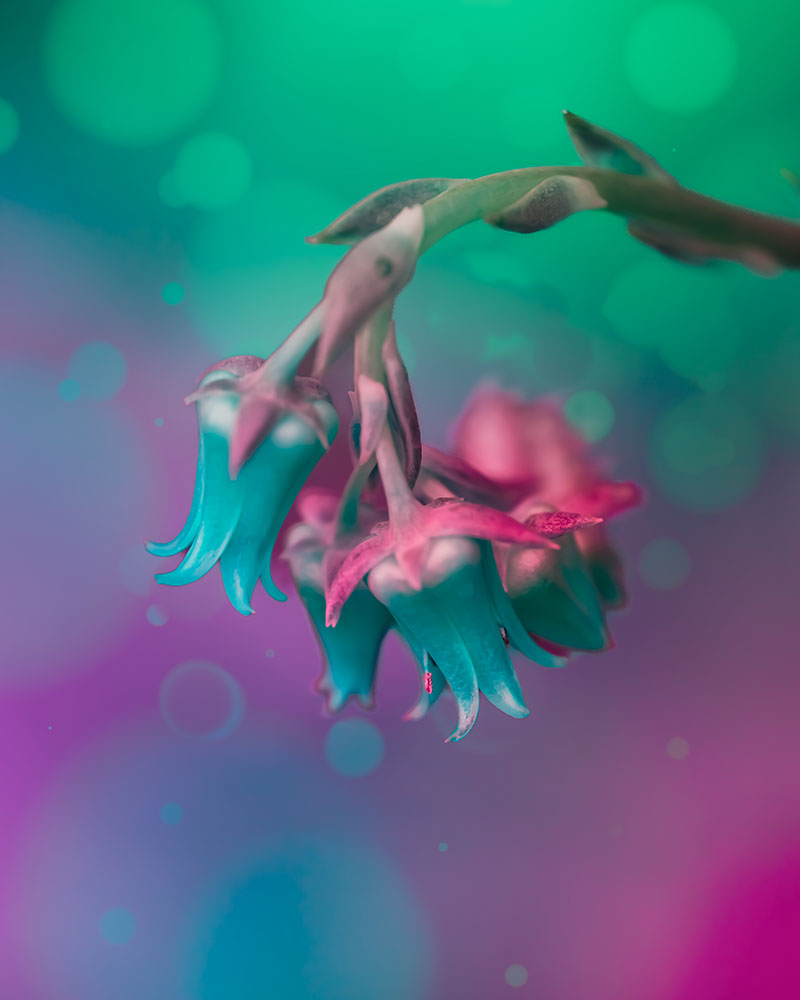
Jeffrey has quickly gained a following on Instagram, having only joined the social media platform in early 2021. He understands the importance of engaging with followers, interacting with them. Along with regular posts, he replies to many of the comments he receives. “I appreciate that most of my work can be recognized based on my style,” he says.

